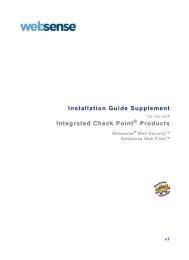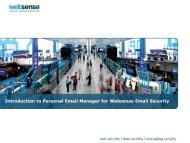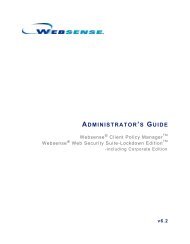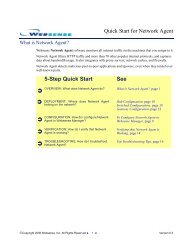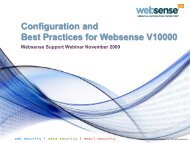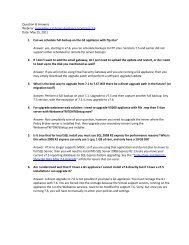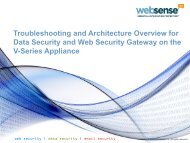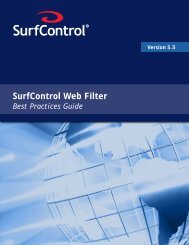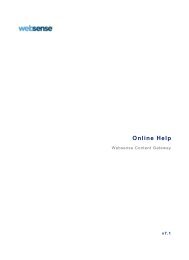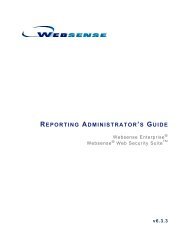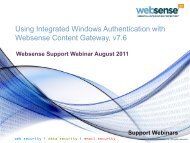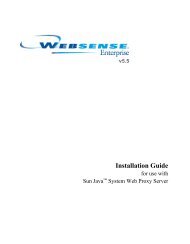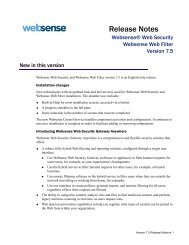Create successful ePaper yourself
Turn your PDF publications into a flip-book with our unique Google optimized e-Paper software.
Chapter 2: Establishing Filtering Policies6. Enter the ports or IP addresses used by this protocol, and select aTransport Method to associate with this protocol.NoteIf you create a custom protocol that uses the same portnumbers as a <strong>Websense</strong> protocol, the custom protocoldefinition takes precedence in filtering and logging.Follow these guidelines for creating protocol identifiers:• At least one characteristic of the protocol definition—the port, the IPaddress, or the transport method—must be unique.• If you select All Ports or All external IP addresses, that definitionoverlaps any specific ports or IP addresses entered in other protocoldefinitions.• Port ranges or IP address ranges are not considered unique if theyoverlap. For example, the port range 80-6000 overlaps with the range4000-9000.7. Under Protocol Filters, select whether this protocol should be permittedor blocked, and whether requests for this protocol should be logged.When you add a custom protocol, this action is applied in all customprotocol filters. You can later modify this action in individual protocolfilters (see Editing a protocol filter, page 37). In <strong>Websense</strong>-defined filters,all custom protocols are set to Permit.8. Click OK, and then click Save Changes.<strong>Websense</strong> Express User <strong>Guide</strong> 47



